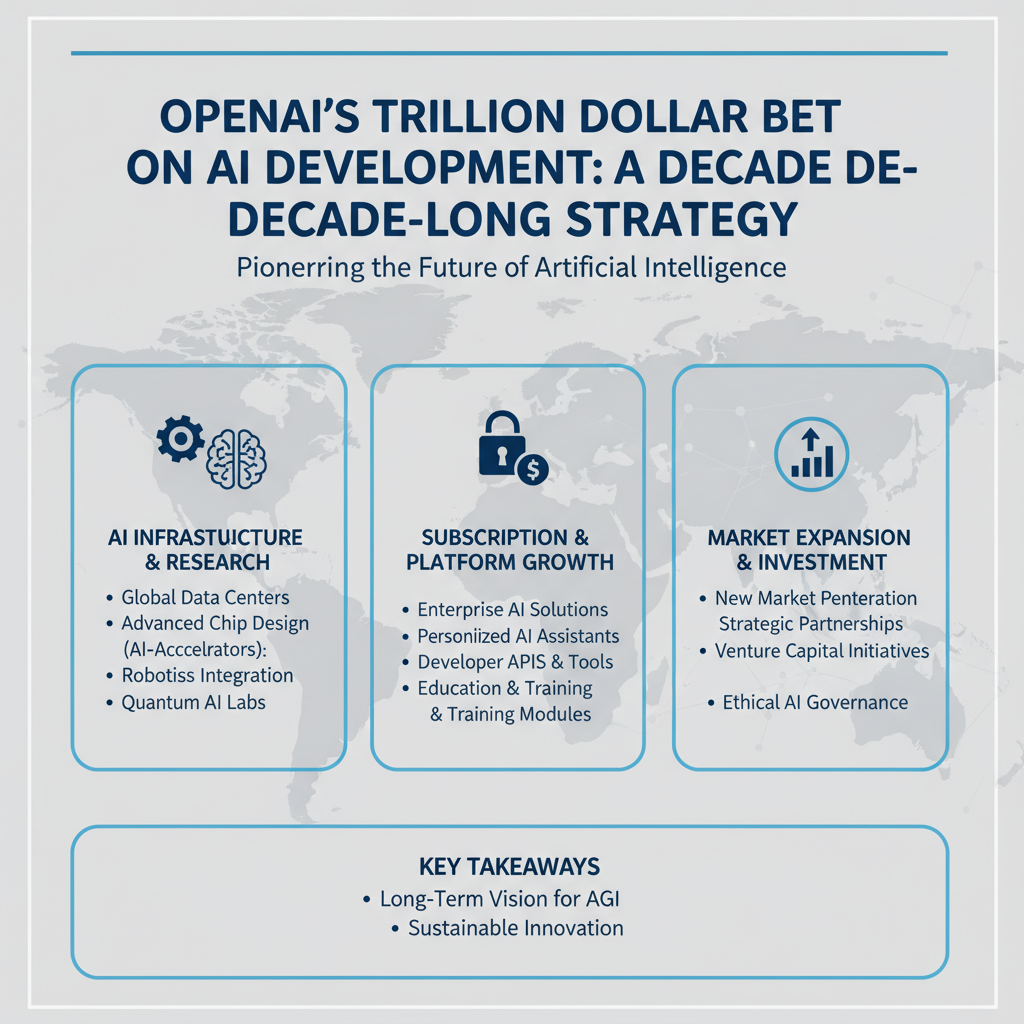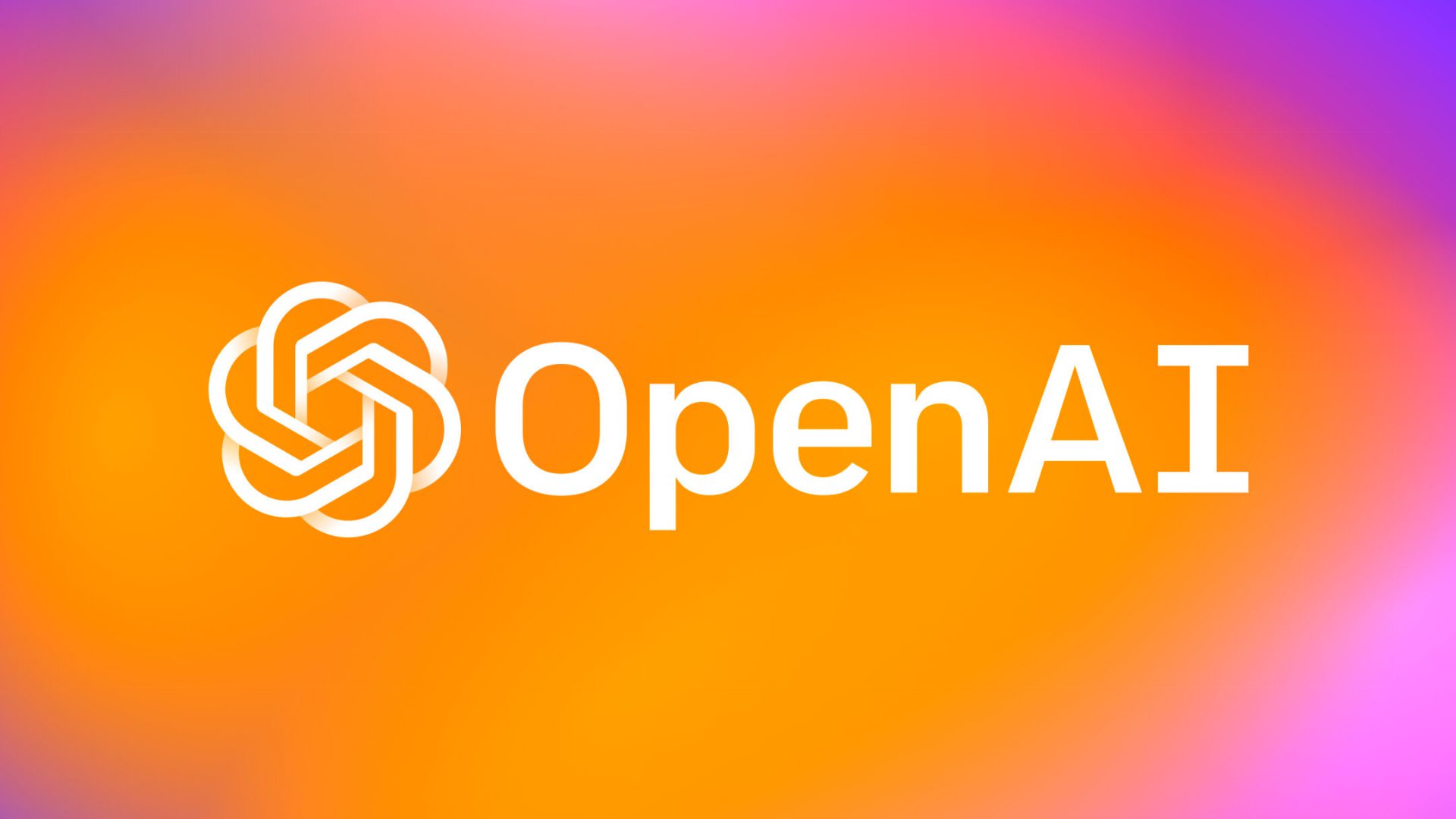
OpenAI's Trillion Dollar AI Investment Strategy for Market Leadership
OpenAI has announced an ambitious plan to invest a trillion dollars over the next decade to solidify its leadership in artificial intelligence. This substantial commitment focuses on long-term AI development, aiming to drive innovation, establish industry standards, and build critical infrastructure like advanced supercomputers. A key challenge for OpenAI is turning its vast user base, particularly from products like ChatGPT, into sustainable revenue through models such as subscriptions. By controlling its AI infrastructure, OpenAI seeks to gain a competitive edge and market dominance amid a rapidly growing AI market projected to surpass a trillion dollars by 2030. Navigating evolving regulations, technological advances, and global competition, OpenAI’s decade-long strategy positions it to lead the future of AI innovation and commercialization.
Summary
OpenAI's Trillion Dollar Bet on AI Development: A Decade-Long Strategy
In the rapidly evolving landscape of artificial intelligence, OpenAI has made headlines with its ambitious plan to invest a trillion dollars over the next decade. This significant financial commitment is not just a gamble but a strategic move aimed at cementing OpenAI's position as a leader in AI innovation. As we delve into the details, we explore how this investment will shape AI strategy, user engagement, revenue models, and the broader infrastructure necessary to support these advancements.
Key Takeaways: - OpenAI's investment strategy focuses on long-term AI development, aiming for market leadership. - The challenge lies in converting the vast user base of services like ChatGPT into a sustainable revenue stream. - Building and selling AI infrastructure is crucial for OpenAI's strategic positioning and operational efficiency. - The AI market is poised for exponential growth, influenced by technological and regulatory trends.
---
OpenAI's Massive Financial Commitment to AI Development
The Trillion Dollar Bet
OpenAI's decision to invest a trillion dollars in AI over the next decade is a bold move that underscores the company's commitment to leading the AI revolution. This "trillion dollar bet" isn't merely about financial muscle; it's a calculated strategy to drive AI investment towards breakthroughs in machine learning, AI ethics, and technology roadmaps. By focusing on long-term strategy, OpenAI aims to not only innovate but also set standards in the AI industry, potentially redefining venture capital's role in tech.
Long-Term Vision in AI
The investment reflects a vision where AI is not just a tool but a fundamental component of future technologies. OpenAI's approach includes significant R&D investments, aiming to push the boundaries of what AI can achieve. This strategy involves risk management in tech, balancing the potential for groundbreaking innovation with the financial implications of such a vast investment.
Converting Users into Revenue: The ChatGPT Challenge
User Base to Revenue Stream
ChatGPT, one of OpenAI's flagship products, boasts a vast user base. However, the challenge lies in transforming these users into a sustainable revenue growth model. With user demographics ranging widely, understanding user retention and customer satisfaction becomes pivotal. OpenAI's strategy includes exploring various monetization strategies, from subscription models to market expansion, ensuring that the value provided by ChatGPT translates into financial returns.
Subscription Models and Beyond
Paid subscriptions offer a direct path to revenue, aligning with the broader trend of the subscription economy. OpenAI must navigate pricing models that reflect the value of AI services while ensuring customer lifetime value. This approach not only secures a steady income but also fosters a deeper engagement with users, enhancing their AI experience.
The Strategic Importance of AI Infrastructure
Building the Backbone of AI
Infrastructure investment is at the heart of OpenAI's strategy. The development of facilities like the speculated OpenAI Stargate supercomputer is critical for enhancing AI performance. This infrastructure isn't just about computing capacity; it's about creating an ecosystem where AI can thrive, from data centers to cloud computing solutions. These investments ensure scalability, efficiency, and the ability to handle the computational demands of advanced AI models.
Vertical Integration and Market Dominance
By controlling its infrastructure, OpenAI gains a competitive edge through technology. This vertical integration in AI allows for optimized operations and innovation, positioning OpenAI as not just a developer but a provider of AI infrastructure as a service. This approach could lead to significant market dominance, as companies increasingly rely on robust AI solutions for their digital transformation.
Navigating Market Trends and Challenges
The Growing AI Market
The AI market is on track to exceed a trillion dollars by 2030, driven by advancements in AI adoption across sectors. OpenAI's strategy aligns with this growth, focusing on industry 4.0, digital transformation, and AI in business applications. The company's investments are timely, tapping into a market ready for AI integration.
Regulatory and Technological Environment
As governments worldwide begin to regulate AI, focusing on AI ethics, data privacy, and security, OpenAI must adapt its strategies to comply with these policies. This regulatory environment could influence how OpenAI secures government contracts, which are not only lucrative but also enhance credibility. On the technological front, advancements like quantum computing could revolutionize AI computation, potentially impacting projects like OpenAI Stargate by offering unprecedented processing power.
Global Competition
OpenAI's journey is not without competition. Tech giants like Google and Microsoft, along with emerging AI startups, are all vying for market share. This global competition necessitates strategic partnerships, innovation, and a keen focus on AI strategy to maintain a lead. OpenAI's approach includes leveraging its infrastructure investments and AI development to stay ahead in this competitive landscape.
Conclusion
OpenAI's trillion-dollar investment in AI over the next decade is a testament to its vision of leading the AI future. From enhancing AI strategy to converting users into revenue through models like ChatGPT, and from building critical infrastructure to navigating a complex market environment, OpenAI's journey is both challenging and promising. As the AI market grows, and with strategic foresight, OpenAI is well-positioned to not only meet but exceed the expectations set by this monumental bet.

Frequently Asked Questions
Q: OpenAI trillion dollar investment
A: OpenAI has attracted significant investments from major technology companies, with some reports speculating the value of its AI advancements and partnerships to potentially reach a trillion-dollar scale. While no single investment has reached a trillion dollars, the combined funding and valuation reflect the growing importance and impact of AI technology. Major investors, including Microsoft, have committed billions to support OpenAI's research and development efforts, helping drive innovation in artificial intelligence.
Q: Sam Altman AI strategy
A: Sam Altman, CEO of OpenAI, advocates for developing artificial intelligence in a safe, ethical, and widely beneficial manner. His AI strategy emphasizes the importance of long-term safety, transparency, and collaboration across organizations to ensure AI technologies benefit humanity globally. Under his leadership, OpenAI focuses on creating advanced AI systems while actively engaging with policymakers and the public to address potential risks and governance challenges.
Q: how OpenAI generates revenue
A: OpenAI generates revenue primarily by offering access to its advanced AI models through paid APIs and subscription services. Businesses and developers pay to integrate OpenAI's language models into their products, applications, or services. Additionally, OpenAI offers premium versions of tools like ChatGPT with extra features for individual users, contributing to its income. This commercial approach supports ongoing research and development in artificial intelligence.
Q: OpenAI Stargate project details
A: As of now, there is no publicly known project named 'Stargate' by OpenAI. OpenAI focuses on developing advanced AI models like GPT and DALL·E, and regularly announces new research and tools on their official blog and website. If 'Stargate' refers to a specific initiative, it may be an internal code name or an upcoming project not yet disclosed to the public.
Q: future of AI infrastructure spending
A: The future of AI infrastructure spending is expected to grow significantly as businesses and governments invest in advanced hardware, cloud computing, and specialized AI chips to support increasingly complex AI models. This growth will be driven by the need for faster processing, greater storage capacity, and improved energy efficiency. Additionally, investments in AI infrastructure will focus on scalability and security to handle expanding data volumes and protect sensitive information. As AI applications expand across industries, infrastructure spending will play a crucial role in enabling innovation and competitive advantage.
Key Entities
OpenAI: OpenAI is an artificial intelligence research organization known for developing advanced AI models including ChatGPT. The company collaborates with industry leaders to integrate AI into various technological platforms.
Sam Altman: Sam Altman is the CEO of OpenAI and a prominent figure in the technology and AI sectors. He plays a key role in guiding OpenAI's research and partnerships with major corporations.
Oracle: Oracle is a multinational technology corporation specializing in database software and cloud computing services. The company is involved in collaborations aimed at enhancing AI infrastructure and applications.
Nvidia: Nvidia is a leading manufacturer of graphics processing units (GPUs) used in AI computation and gaming. Their hardware is crucial for training and running large AI models.
AMD: AMD designs and produces computer processors and graphics cards that are integral to AI and high-performance computing. The company competes directly with Nvidia in supplying hardware for AI workloads.
Broadcom: Broadcom is a global technology company focusing on semiconductors and infrastructure software solutions. It provides key components used in data centers that support AI processing and storage.
External articles
- OpenAI's $1 Trillion Bet: 5 Years to Close the Gap
- OpenAI Bets $1 Trillion on AI, Has Five Years to Make It Work
- OpenAI has 5 years to pull off the impossible — turn $13 ...
Related Articles
- Bitcoin Core v30 Update Expands OP_RETURN Data Capacity Amid Community Debate
- China’s Rare Earth Export Controls Escalate US-China Trade War and Impact Crypto Markets
YouTube Video
Title: OpenAI, Korean Tech Giants Launch 'Stargate' AI Project
URL: https://www.youtube.com/shorts/E7g9fw7Adec
Crypto